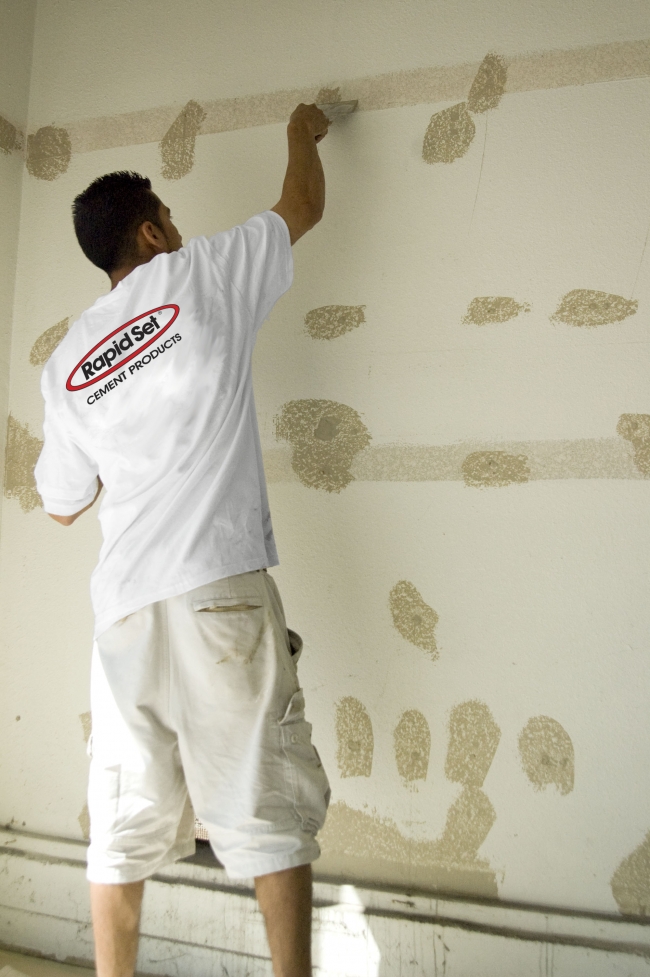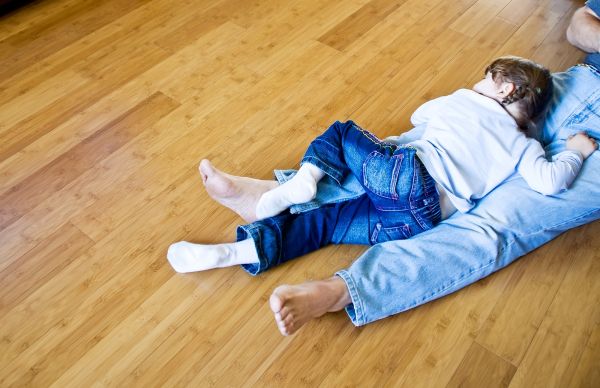May be your hired contractor did not do much of justice to his work so the need to mend minor damages on your drywall may arise. In most common cases, a patch will create the problem. The work can vary from a very taxing one to a slight smear of compound. If the damage is bad, you may also need extra wallboard. Fixing the damage can be easy, if you just know how to go about it.

Things that you will need:
- Knives of various widths which are used to repair drywall
- Compound
- Corner knife
- Hand sander
- Wall board
- Taping knife
- Peal and stick patches for holes in the drywall
- Coarse sand paper
Instructions you need to follow are described below.
1. Inspect the spot. The first step that you should take towards repairing a drywall is inspect the damaged area. You should have a clear idea about what you will need and how you will go about it. The patch process should start after you have fixed the other problems surrounding the patch (i.e. if there are any).
2. Compounds for the repair. The choice between a light-weight compound and all purpose compounds has to be decided by you according to the nature of the damage. Light weight compounds have the advantage of drying quicker and weighing lesser over other thicker compounds. Old-school drywall fixers have the same say. Put a sufficient amount of compound over the area that needs fixing. Always put at least two to three coats of the compound.
3. Sanding off the extra. If you think that you are done with the area then use a sanding block with sand paper and an eight-inch knife. Texture the area by smoothing out the finished area. Apply the compound over the area and then let it be for some time. After the compound is dry, give the area a final touch using a sand paper. Take a sponge and apple texturing and some fresh compound.
4. Cover the surrounding area. When you are sanding the compound applied area, make sure you sand off at least an inch past the compound area to give it a smooth and finished look.
5. Covering a doorknob hole. If you need to cover a bad patch which came from a doorknob hole then use an adhesive patch made of aluminum screen covered with fiberglass mesh. It comes with a peel-off back and is applied as a bandage. After you have applied the patch, apply the drywall compound over the fixed area and then even it out by using a sand paper.
6. Wallboard can also help to repair. You can also use a wallboard to repair ypur drywall. Cut large hole areas inot square shapes and then place a fitting piece of wallboard on the damaged area. You will need at least two studs to secure the wallboard. Place wood studs behind the wallboard to screw the wallboard into place. To be extra cautious while placing self-adhesive fiber mesh, so that the wallboard stays in its place. After the patching work is done, the process of applying the compound and sanding the extra is repeated.
7. Crack fixing. If you come across a crack in your drywall, you will fing your taping knife pretty helpful. Use it to create a V-shaped groove and trace it along the line of the crack. After you are done with taping the crack, apply the drywall compound over it. Make sure that you apply the compound at least an inch extra on both the sides. Use an eight-inch taping knife to smooth out the uneven compound applied area into the untouched drywall area.
8. Sand it out even. After all the fixing work is done, you will need to apply a thin layer of compound over the area and then use a sander or a sand paper to give the area a smoothness. This is very essential, if you want to make the fixed area look untouched. All the repair work area should look even with the whole drywall surface.
9. Ease out your problems. You may not find wood studs to fix the screws in. In that case, you can make use of pieces of wood and saw them out into the right sizes. They will serve the purpose but make sure that you place them with appropriately placed studs.
Fixing a damaged drywall is not much of a hassle, if you have an idea about the nature of the damage and the repair work that is necessary. Inspection of the damaged spot closely is very important. After the fixing work is done, it is always advisable to pay more attention to the finish of the repair work. The area should be smoothed out properly and merge well with the surrounding wall. The above instructions will guide you through the fixing job in a green way.




